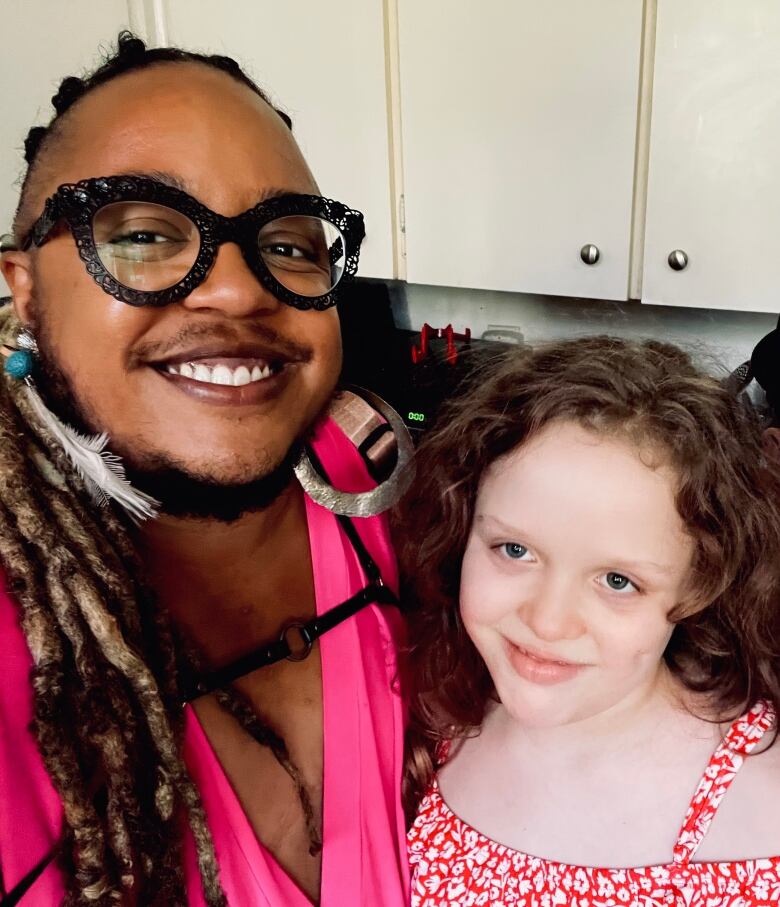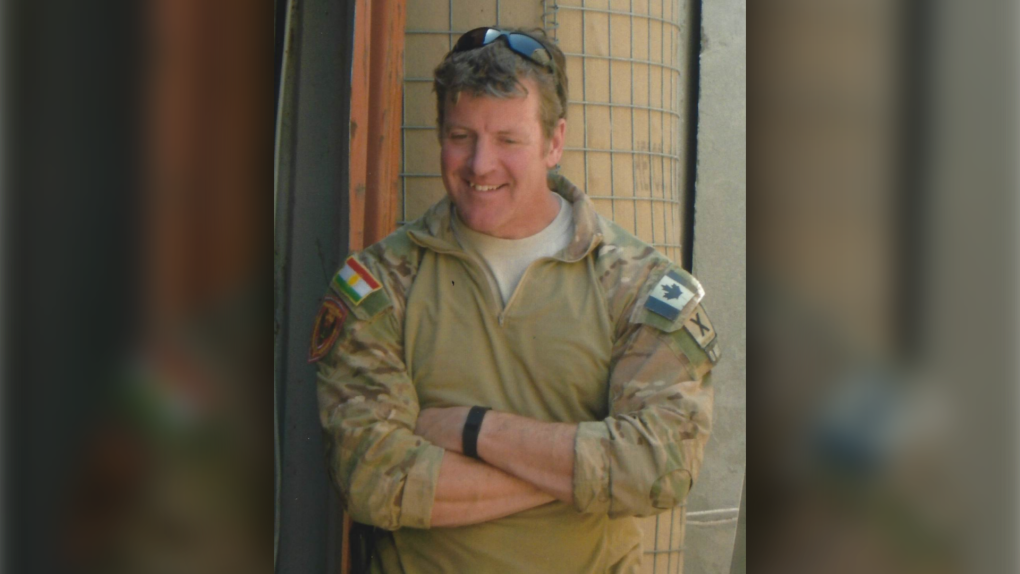Syrus Marcus Ware, an assistant professor at McMaster University in Hamilton, was “immediately struck” by an image shared several days ago by his cousin in California.
The illustration of a pregnant Black woman, showing a Black fetus inside her belly, was created by Nigerian medical student and Illustrator Chidiebere Ibe.
“I realized that I had never seen anything like it,” Ware told CBC Hamilton.
Ware — a trans man who carried his now-10-year-old daughter Amélie — said he has “read countless pregnancy books, including very progressive ones,” but had never seen that kind of representation, aside from a drawing of his own he once made.
“I had literally never seen a Black baby drawn in a uterus … I realized that I hadn’t even noticed that was the case until the evidence was right in front of me.
“It’s so interesting how normalized it is that we are so used to only ever seeing white babies that we don’t even notice, and so it’s so striking to see this Black baby drawing this way,” Ware added.
Ware, who teaches with McMaster’s school of the arts, said he and many others have shared Ibe’s illustration.
“The medical illustrator went from having about 2,000 followers to now having [more than 100,000] followers just over the weekend.”

Ware wanted to share the illustration to say, ‘Look, we can do better — this is what it looks like to make change in the medical industrial complex.’
“This young medical illustrator who’s training to be a neurosurgeon is doing just that. He’s interrupting the process of white supremacy and instead saying, in fact, I want to imagine Black babies being born in this world, so I’m going to draw them … It really shows the importance of representation and supporting those medical illustrators who can actually tell our stories as part of their medical work.”
‘The responses are quite amazing’
Ibe said he started creating medical illustrations last July.
“The responses are quite amazing, because first of all I never expected the drawing to go that viral,” he told CBC News via phone from Nigeria.
“I spend a lot of time to go through the comments on the post and it’s amazing. I feel so overwhelmed right now by people’s comments, and I’m glad that people are blessed by the work and people feel that it’s time to make great change,” said Ibe, who has just been admitted to Kyiv Medical School.
Liz Darling, assistant dean of midwifery at McMaster and an associate professor in the department of obstetrics and gynecology, described Ibe’s work as “a beautiful illustration.”
“I like the fact that it is illustrating a Black woman and a Black baby,” she said.
“I think it’s just very well done. In addition to that, there’s incredibly good detail in the drawing. It’s a very well done, a very detailed anatomically accurate drawing.”
Moving away from ‘white centredness’
Darling told CBC News there’s a need to move away from “white centredness” in the way in which images of bodies are presented.
“For a long time, our medical textbooks have been very white centred … even the language that we use when we think about how we describe the ways in which things present. They’re based on norms of people having white skin.”
Darling said changing this is important for a number of reasons.
“One of them is that it’s only reflecting what is relevant for a portion of the people who receive health care.
“When we exclude non-white bodies and content that’s relevant to people who are Black or brown, it means that our health-care providers aren’t well prepared to provide care to people who have darker-coloured skin, and they may miss physical signs and symptoms that present differently, depending on what colour your skin colour is.”
Additionally, Darling said, those images actually shape the experiences people have as students learning to become health-care professionals.
“When people are studying to become health-care professionals and they don’t see themselves reflected in the content, in the curriculum and in the images that surround them and are related to their profession, then it makes it harder for them to feel like they actually even fit and belong in that profession.”
‘Seeing it was refreshing’
Hamilton midwife Mary Ajenifuja said Ibe’s illustration is unique.
“My reaction to seeing it was like, ‘Uh, that’s something I haven’t seen,'” Ajenifuja told CBC Hamilton.
“I have seen lots of illustrations of pregnant people and fetuses obviously through schooling at McMaster and becoming a midwife, so I’ve seen lots of images like it, but not quite that.
“I think that seeing it was refreshing … I saw my family members in that picture. It just felt familiar.”

Ajenifuja said based on her own experience as a midwife, this kind of representation has been “lacking.”
“I definitely think that there have been strides in recent years to include representations of Black parents or parents of colour in images and photography. I think that I’ve seen more of that popping up recently, but I definitely think that there is a lack of representation,” she said. “What we often see is that white is the default.”
Ajenifuja said the lack of Black representation in medical drawings and textbooks can leave Black people “feeling like an ‘other’ in the day-to-day without really registering it, and it can take a toll on some people.”
“Having this representation, whether it’s through clinical handouts and textbooks and things like that, all of those little things add up and make you feel more included and more seen, more heard. I think that that is definitely overdue.”
For more stories about the experiences of Black Canadians — from anti-Black racism to success stories within the Black community — check out Being Black in Canada, a CBC project Black Canadians can be proud of. You can read more stories here.






More Stories
First in Canada procedure performed at London, Ont. hospital
B.C. mom distributes air quality monitors after 9-year-old’s asthma death during wildfires
What do weight loss drugs mean for a diet industry built on eating less and exercising more?